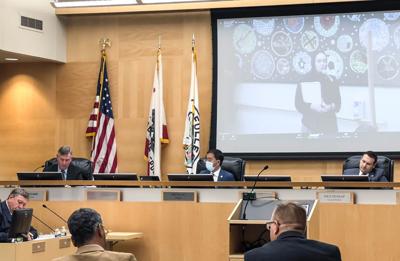The Fullerton City Council, in an attempt to build over 13,000 units to stay on track with the city’s plan to provide affordable housing, are still in search of areas to build housing and apartment complexes in the city.
On Tuesday, the council held a study session to receive an update on what areas throughout the city qualify as Housing Incentive Overlay Zones, which will allow property owners to develop housing units on non-residential underlying zoning classifications, requiring that 10% of the proposed units have to be considered affordable housing.
The city’s housing element of the general plan, Fullerton must build around 13,200 units to house over 143,000 residents within the 2021 to 2029 planning period.
Around 5,200 of these units must be allotted for low income residents.
Currently, 12% of Fullerton residents live below the poverty line.
Initially, the city looked at 19 specific sections throughout Fullerton in 2020, but expanded its search to all non-residential areas citywide. Areas of land that are being looked at include commercial and industrial plots.
With more areas considered, over 24,000 plots of land met the requirements for HIOZ, according to Dudek, a planning and engineering firm hired to conduct research for this project.
Left out of this assessment were areas that fell under public use, like schools and city property, as well as historic sites, infrastructure plots and areas that fell below a screening average.
Council Member Ahmad Zahra pointed out that the development process will take a long time and that the 10% affordability requirement will not be as impactful.
“My concern is that the percentage is too low to be able to meet the affordability levels,” Zahra said.
Dudek representative Gaurav Srivastava explained that the affordability requirement must be strategically decided upon to avoid a “poison pill” effect, in which a high affordability inclusion percentage could deter builders from development and the city might lose potential housing opportunities.
“The net result of that is that you get zero affordable units and you get zero market rate. So we need to be very careful on where that threshold is set, which is why we suggest that 10% as a tentative number,” Srivastava said.
Zahra advocated for incentives for builders who prioritize 100% affordable developments.
Council Member Nicholas Dunlap condemned the affordability requirements and expressed that higher density development bonuses would be a better solution to drive costs down.
“The idea of mandatory inclusion or forced inclusionary housing came up and that’s just generally not something I’m supportive of,” said Dunlap.
During the public comment section of the meeting, some residents addressed concerns over housing complexes with high density population in the city.
“Are we getting money to widen the roads? We getting money for bicycle lanes? We getting money for parking? Are we putting new charging stations in?” one Fullerton resident said.
Dudek’s assessment states that areas larger than one acre would be able to house up to 45 units, while areas smaller than an acre would be able to accommodate 30 units.
Residents also commented on a lack of community outreach concerning the housing element in both low income and multicultural neighborhoods.
Siding with the residents, Mayor Fred Jung questioned Dudek on this miscommunication between the city and its residents.
“Fullerton has its share of disadvantaged communities and communities of color. It seems as though outreach has been extraordinarily limited, if any at all,” Jung said.
Explaining that Dudek was only half way through with its research, Srivastava expressed that they had not completed all their outreach.
Srivastava said more community outreach will take place when they have further recommendations from the city and more information is available to share.
The city has been able to fund this research through state grant money totaling over $120,000.
Fullerton has extended its contract with Dudek through July 31, 2024, allowing it to use all available funds from the grant, not impacting the city’s general fund.








Commented
Sorry, there are no recent results for popular commented articles.